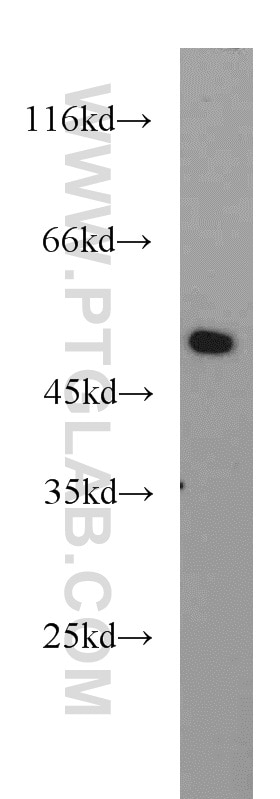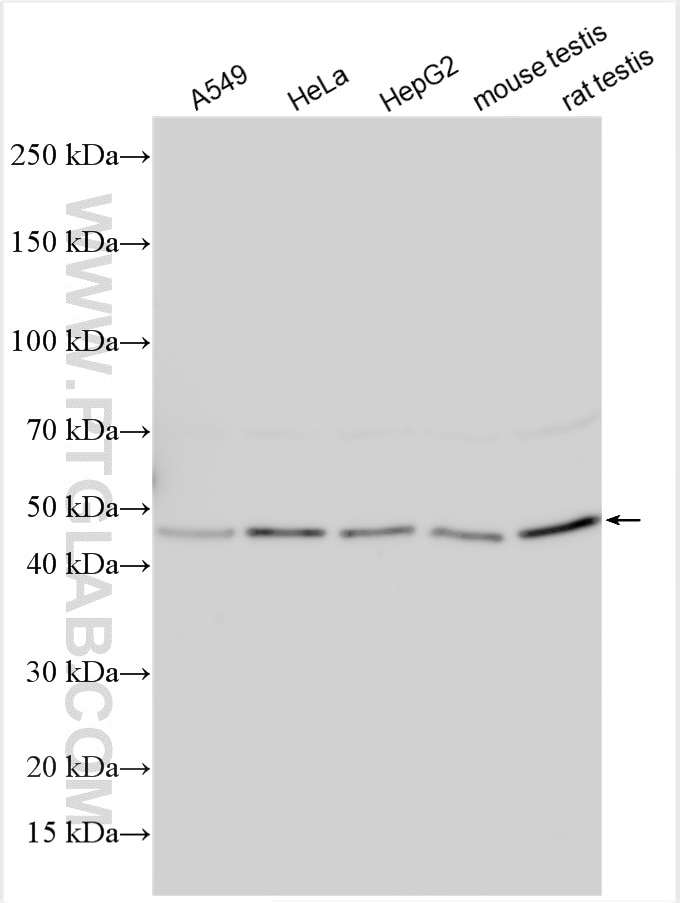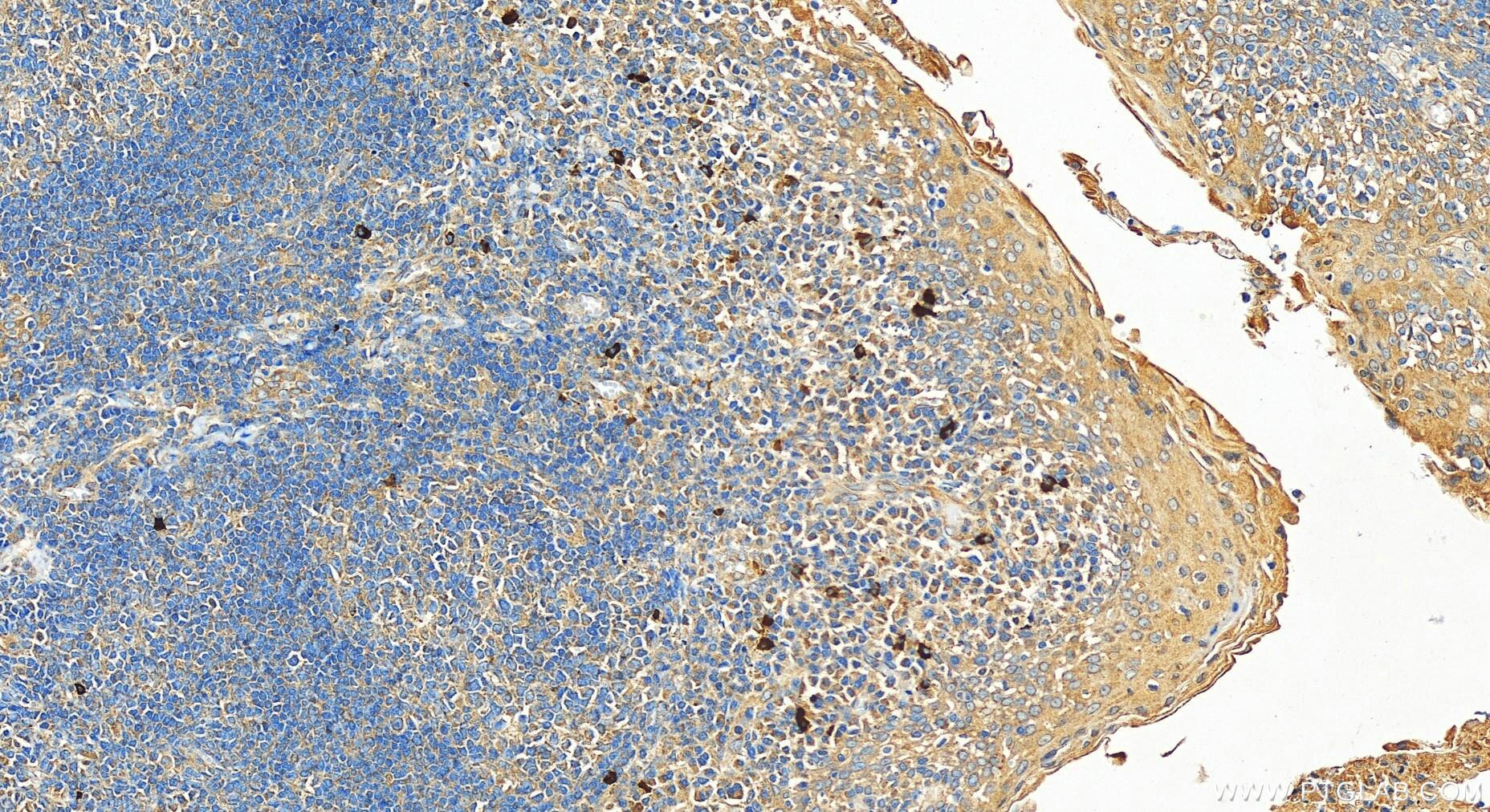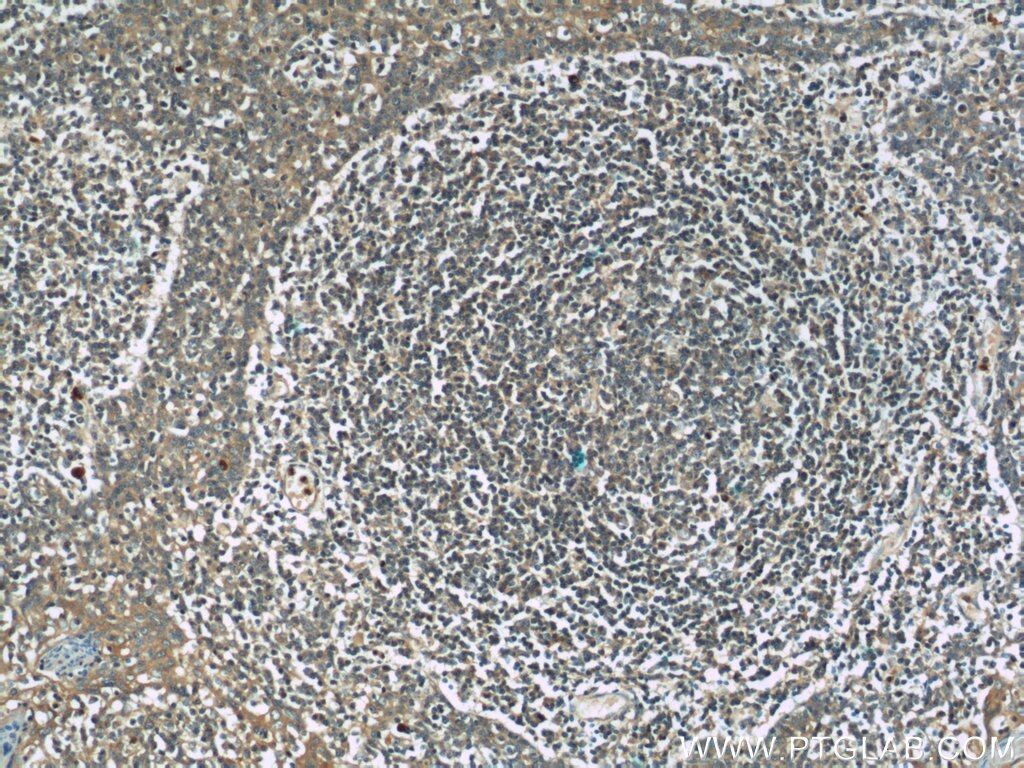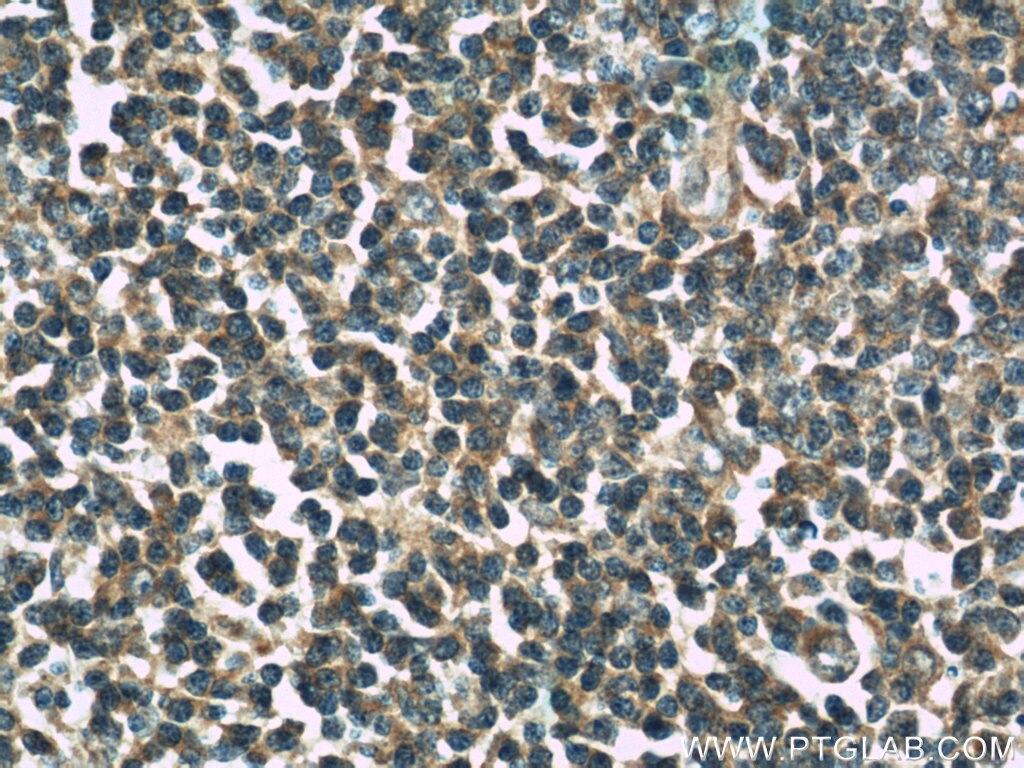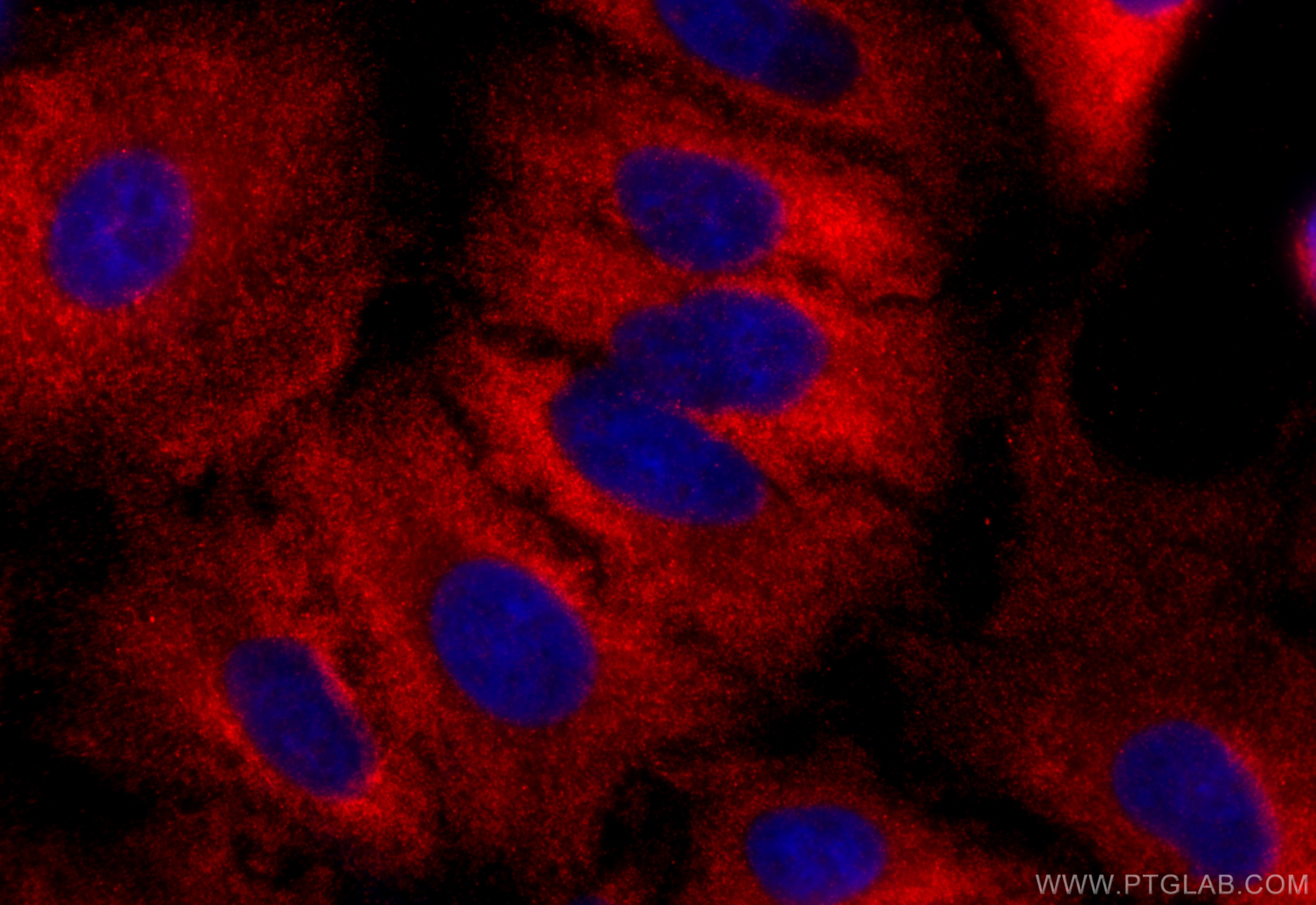Anticorps Polyclonal de lapin anti-BPIL1
BPIL1 Polyclonal Antibody for WB, IHC, IF/ICC, ELISA
Hôte / Isotype
Lapin / IgG
Réactivité testée
Humain, rat, souris
Applications
WB, IHC, IF/ICC, ELISA
Conjugaison
Non conjugué
N° de cat : 13461-2-AP
Synonymes
Galerie de données de validation
Applications testées
| Résultats positifs en WB | cellules A549, cellules HeLa, cellules HepG2, tissu testiculaire de rat, tissu testiculaire de souris |
| Résultats positifs en IHC | tissu d'amygdalite humain, il est suggéré de démasquer l'antigène avec un tampon de TE buffer pH 9.0; (*) À défaut, 'le démasquage de l'antigène peut être 'effectué avec un tampon citrate pH 6,0. |
| Résultats positifs en IF/ICC | cellules A549, |
Dilution recommandée
| Application | Dilution |
|---|---|
| Western Blot (WB) | WB : 1:500-1:2000 |
| Immunohistochimie (IHC) | IHC : 1:800-1:3200 |
| Immunofluorescence (IF)/ICC | IF/ICC : 1:200-1:800 |
| It is recommended that this reagent should be titrated in each testing system to obtain optimal results. | |
| Sample-dependent, check data in validation data gallery | |
Applications publiées
| WB | See 2 publications below |
| IHC | See 2 publications below |
Informations sur le produit
13461-2-AP cible BPIL1 dans les applications de WB, IHC, IF/ICC, ELISA et montre une réactivité avec des échantillons Humain, rat, souris
| Réactivité | Humain, rat, souris |
| Réactivité citée | Humain |
| Hôte / Isotype | Lapin / IgG |
| Clonalité | Polyclonal |
| Type | Anticorps |
| Immunogène | BPIL1 Protéine recombinante Ag4051 |
| Nom complet | bactericidal/permeability-increasing protein-like 1 |
| Masse moléculaire calculée | 458 aa, 49 kDa |
| Poids moléculaire observé | 49 kDa |
| Numéro d’acquisition GenBank | BC034415 |
| Symbole du gène | BPIL1 |
| Identification du gène (NCBI) | 80341 |
| Conjugaison | Non conjugué |
| Forme | Liquide |
| Méthode de purification | Purification par affinité contre l'antigène |
| Tampon de stockage | PBS with 0.02% sodium azide and 50% glycerol |
| Conditions de stockage | Stocker à -20°C. Stable pendant un an après l'expédition. L'aliquotage n'est pas nécessaire pour le stockage à -20oC Les 20ul contiennent 0,1% de BSA. |
Informations générales
Bactericidal/permeability-increasing protein-like 1 (BPIL1, also known as LPLUNC2 or BPIFB2) is a member of the lipid transfer (LT)/lipopolysaccharide binding protein (LBP) family. LT/LBP proteins are structurally related proteins capable of binding phospholipids and lipopolysaccharides (PMID: 12185532). The gene of BPIL1 maps to Chromosome 20q11, and encodes a 458-amino acid protein with a calculated molecular weight of 49 kDa. It is highly expressed in hypertrophic tonsils. BPIL1 has been identified as a nasal mucous protein that may be involved in immune response in the nose against microbial infections (PMID: 15996010). Reduced expression of antimicrobial PLUNC proteins (LPLUNC1 and LPLUNC2) has been reported in nasal polyp tissues of patients with chronic rhinosinusitis (PMID: 22676062).
Protocole
| Product Specific Protocols | |
|---|---|
| WB protocol for BPIL1 antibody 13461-2-AP | Download protocol |
| IHC protocol for BPIL1 antibody 13461-2-AP | Download protocol |
| IF protocol for BPIL1 antibody 13461-2-AP | Download protocol |
| Standard Protocols | |
|---|---|
| Click here to view our Standard Protocols |
Publications
| Species | Application | Title |
|---|---|---|
Allergy Reduced expression of antimicrobial PLUNC proteins in nasal polyp tissues of patients with chronic rhinosinusitis. | ||
J Proteome Res Proteomic analysis of human bronchoalveolar lavage fluid after subsgemental exposure. | ||
J Immunol Res Reduced Expression of Antimicrobial Protein Secretory Leukoprotease Inhibitor and Clusterin in Chronic Rhinosinusitis with Nasal Polyps. |
